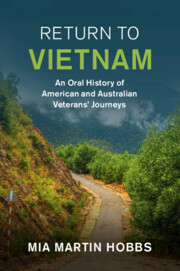Bibliography
Published online by Cambridge University Press: 01 October 2021
Summary

- Type
- Chapter
- Information
- Return to VietnamAn Oral History of American and Australian Veterans' Journeys, pp. 247 - 267Publisher: Cambridge University PressPrint publication year: 2021

